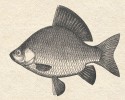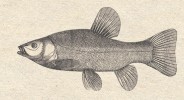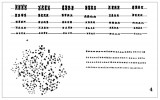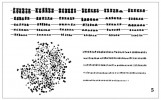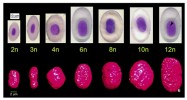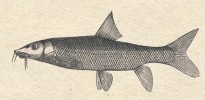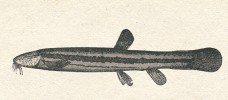Polyploidie je důležitým evolučním mechanismem přispívajícím k biodiverzitě současných ryb a také významným nástrojem v akvakultuře. Tento článek podává přehled o mechanismech vzniku polyploidie a o kauzálním vztahu mezi hybridizačními událostmi a zvýšením stupně ploidie. Uvádí rovněž příklady využití specifických vlastností polyploidů v akvakultuře.
Použitá a citovaná literatura:
Alves, M. J., Coelho, M. M., Collares-Pereira, M. J., 2001. Evolution in action through hybridisation and polyploidy in an Iberian freshwater fish: a genetic review. Genetica 111: 375–385
Beaumont, A. R., Hoare, K., 2003. Biotechnology and genetics in fisheries and aquaculture. Blackwell Publishing, Oxford Malden Ames Victoria Berlin, 158 pp.
Benfey, T. J., 1989. A bibliography of triploid fish, 1943 to 1988. Canadian Technical Report of Fisheries and Aquatic Sciences 1682, 33 s.
Benfey, T. J., 1999. The physiology and behaviour of triploid fishes. Reviews in Fisheries Science7: 39–67
Benfey, T. J., Sutterlin, A. M., 1984. Growth and gonadal development in triploid landlocked Atlantic salmon (Salmo salar). Can. J. Fish. Aquat. Sci. 41, 1387–1392
Benfey, T. J., Solar, I. I., de Jong, G., Donaldson, E. M., 1986. Flow-cytometric confirmation of aneuploidy in sperm from triploid rainbow trout. Transactions of the American Fisheries Society 115: 838–840
Donaldson, E. M., Benfey, T. J., 1987. Current status of induced sex manipulation. In: Idler, D. R., Crim, L. W., Walsh, J. M. (Eds.), Proceedings of the Third International Symposium on the Reproductive Physiology of Fish, Memorial University of Newfoundland, St. John, pp. 108–119
Donoghue, P. C. J., Purnell, M. A., 2005. Genome duplication, extinction and vertebrate evolution. Trends in Ecology and Evolution, 20(6): 312–319
Froschauer, A., Braasch, I., Volff, J.-N., 2006. Fish genomes, comparative genomics and vertebrate evolution. Current Genomics 7: 43–57
Gomelsky, B., 2003. Chromozome set manipulation and sex control in common carp: a review. Aquatic Living Resources 16: 408–415
Goudie, C., 1988. Some triploid grass carp can be induced to spawn. U.S. Department of Interior, Fish and Wildlife Service, Research Information Bulletin, 88–24, 2 s.
Hörstgen-Schwark, G., Meyer, J.-N., Wedekind, H., Langholz, H.-J., 1997. Carcass and meat quality of heat-shocked and tetraploid-derived triploid rainbow trout (Oncorhynchus mykiss). Proc. VI. Int. Symposium on Genetics in Aquaculture, Stirling, Scotland, June 23–27, 1997
Horváth, L., Orbán, L., 1995. Genome and gene manipulation in the common carp. Aquaculture 129: 157–181
Hulak, M., Kaspar, V., Psenicka, M., Gela, D., Li, P., Linhart, O., 2010. Does triploidization produce functional sterility of triploid males of tench Tinca tinca L.? Reviews in Fish Biology and Fisheries 20 (3): 307–315
Choleva, L., Janko, K., De Gelas, K., Bohlen, J., Šlechtová, V., Rábová, M., Ráb, P., 2012. Synthesis of clonality and polyploidy in vertebrate animals by hybridization between two sexual species. Evolution 66, 7: 2191–2203
Chourrout, D., 1987. Genetic manipulations in fish: review of methods. In: Tiews, K. (Ed.), Selection, Hybridization and Genetic Engineering in Aquaculture, vol. 2. Heenemann Verlagsgesellschaft mbH, Berlin, Germany, pp. 111–126
Chourrout, D., Nakayama, I., 1987. Chromosome studies of progenies issued from tetraploid females of rainbow trout. Theoretical and Applied Genetics 74: 687–692
Ihssen, P. E., McKay, L. R., McMillan, I., Phillips, R. B., 1990. Ploidy manipulation and gynogenesis in fishes: Cytogenetic and fisheries applications. Transactions of the American Fisheries Society 119: 698–717
Kendall, C., Valentino, S., Bodine, A.B., Luer, C.A., 1994. Triploidy in a nurse shark, Ginglymostoma cirratum. Copeia 1994: 825–827
Koedprang, W., Na-Nakorn, U., 2000. Preliminary study on performance of triploid Thai silver barb, Puntius gonionotus. Aquaculture 190: 211–221
Kohn, M., Hgell, J., Vogel, W., Minich, P., Kehrer-Sawatzki, H., Graveas, J. A. M., Harneister, H., 2006. Reconstruction of a 450-My-old ancestral vertebrate protokaryotype. Trends in Genetics 22(4): 203–210
Krahulec, F., Krahulcová, A., Rosenbaumová, R., Plačková, I., 2011. Production of polyhaploids by facultatively apomictic Pilosella can result in the formation of new genotypes via genome doubling. Preslia 83 (3): 471–490
Linhart, O., Rodina, M., Flajshans, M., Mavrodiev, N., Nebesarova, J., Gela, D., Kocour, M., 2006. Studies on sperm of diploid and triploid tench (Tinca tinca L.). Aquaculture International 14: 9–25
Pandian, T. J., Koteeswaran, R., 1998. Ploidy induction and sex control in fish. Hydrobiologia 384: 167–243
Piferrer, F., Benfey, T. J., Donaldson, E. M., 1994. Gonadal morphology of normal and sex-reversed triploid and gynogenetic diploid coho salmon (Oncorhynchus kisutch). Journal of Fish Biology 45: 541–553
Piferrer, F., Beaumont, A., Falguière, J.-C., Flajšhans, M., Haffray, P., Colombo, L., 2009. Polyploid Fish and Shellfish: Production, Biology and Applications to Aquaculture for Performance Improvement and Genetic Containment. Aquaculture 293 (3–4): 125–156
Thorgaard, G. H., 1983. Chromozome set manipulation and sex control in fish. In: Hoar, W.S., Randall, D. J., Donaldson, E. M. (Eds.), Fish Physiology, vol. 9B. Academic Press, New York, USA, pp. 405–434
van Eenennaam, J. P., Stocker, R. K., Thiery, R. G., Hagstrom, N. T., Doroshov, S. I., 1990. Egg fertility, early development and survival from crosses of diploid female x triploid male grass carp (Ctenopharyngodon idella). Aquaculture 86: 111–125
Volff, J.-N., 2005. Genome evolution and biodiversity of teleost fish. Heredity 94: 280–294
Polyploidy is an important evolutionary mechanism contributing to the biodiversity of extant fishes, and it also represents a notable tool in aquaculture. This paper reviews the mechanisms by means of which polyploidy arises and the causal relationship between hybridisation events and elevation of the ploidy level. Utilization of specific traits of polyploids in aquaculture is also discussed.
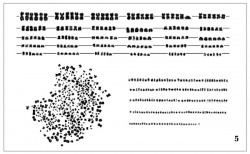 Metafázní buňka (vlevo dole) a z ní sestavený karyotyp (nahoře a vpravo) jesetera ruského (Acipenser gueldenstaedti) ukazuje chromo spontánně triploidního jedince s ploidií odpovídající 360 chromozomům.
Metafázní buňka (vlevo dole) a z ní sestavený karyotyp (nahoře a vpravo) jesetera ruského (Acipenser gueldenstaedti) ukazuje chromo spontánně triploidního jedince s ploidií odpovídající 360 chromozomům.
